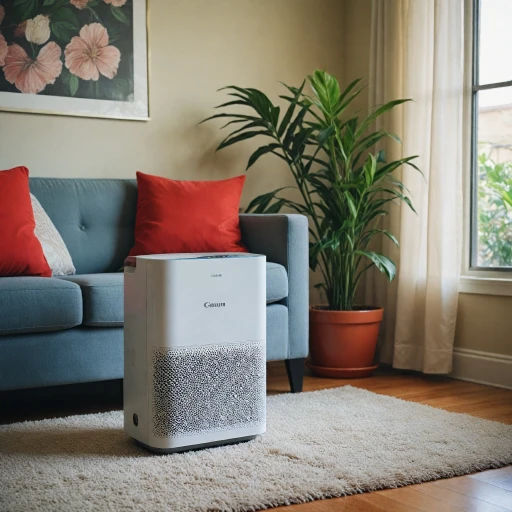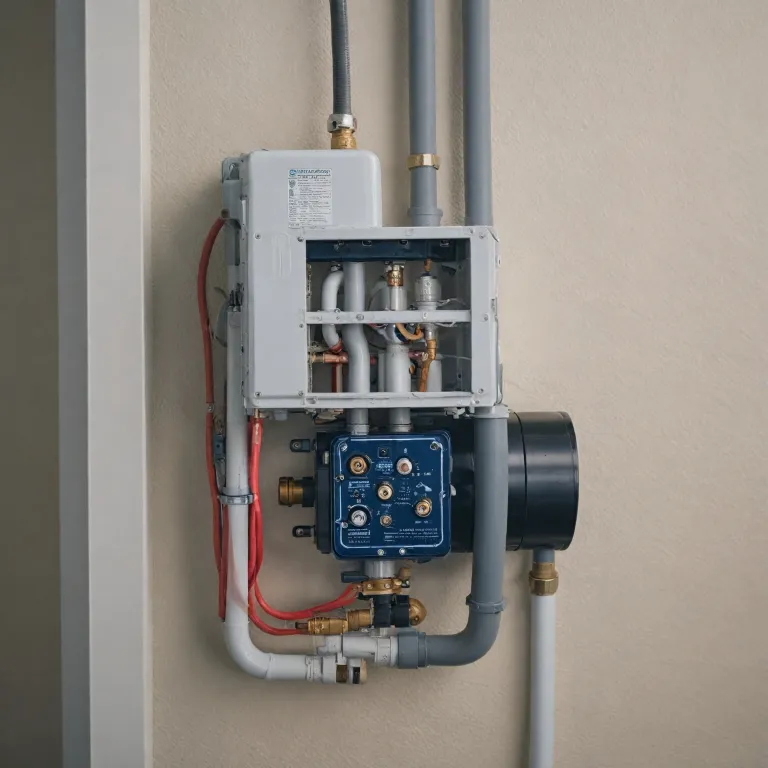The Importance of a Condensate Pump in Mini Split Systems
The Necessity of Condensate Pumps in Enhancing Mini Split Systems
Mini split air conditioning systems are a revolution in the HVAC industry, known for their ability to efficiently control the temperature in diverse spaces. However, often overlooked is a small yet crucial component: the condensate pump. Understanding its role is vital for the optimal operation and maintenance of your mini split unit.
In any air conditioning setup, moisture removal becomes a critical function as warm indoor air cools and releases water. This moisture needs to be safely and effectively removed, enter the condensate pump. This small yet vital component ensures that the excess water, or condensate, is efficiently drained away from the conditioning unit, preventing water accumulation that could lead to system damage.
Condensate pumps are essential in situations where gravity drainage isn't feasible:
- Urban apartments with limited outdoor access
- Office buildings with internal air conditioning systems
By integrating a condensate pump, you enhance the unit's operational efficiency, safeguarding against water damage while simultaneously maintaining air quality. Mini split air conditioners equipped with reliable pumps, like the Aspen Mini, are particularly preferred for their compact design and low noise levels.
Selection of a suitable pump depends on factors like high capacity requirements, the voltage range, or the safety switch mechanism. Opting for a device with a recommended head and proper tank capacity will ensure you have a product that aligns with your air conditioning needs.
For more insights on air conditioning components like filters, you might find
air filter tips for New Mexico interesting, providing a deeper understanding of product effectiveness in various climates. Overall, including the right condensate pump within your system not only protects the unit's integrity but also extends its lifespan and efficiency.
How Condensate Pumps Work
Mechanism Behind Condensate Pump Operation
Condensate pumps play a critical role in the functionality of mini split systems. These pumps are specifically engineered to manage the removal of condensate or water that is produced by air conditioning units. Here’s how they work:
- Collection & Activation: As air conditioning units operate, they produce condensate as a byproduct. This is mainly water that forms when warm air meets the cool evaporator coil inside the mini split system. The condensate accumulates in a designated area or tank. Once a certain level is reached, a float mechanism within the condensate pump is triggered, activating the pump.
- Pumping Action: Upon activation, the pump transports the stored water through a series of tubes, effectively removing it from the mini split system. The primary aim here is to ensure the condensate does not overflow or cause damage to your air conditioning unit or property. This is especially critical for indoor conditioning units without direct access to a natural slope for drainage.
- High Performance & Efficiency: Modern condensate pumps are designed to work with high capacity systems, ensuring seamless water removal. They often boast features like low noise operation, making them a desirable addition to compact conditioning units, particularly in quiet environments.
For those looking to learn more about improving indoor environments effectively,
smoke diffusers can also play a significant role. Whether you own an aspen mini or another model, understanding the basic mechanism of these pumps enhances your ability to troubleshoot and maintain your systems efficiently.
Benefits of Using a Condensate Pump
Advantages of Integrating a Condensate Pump in your Setup
Installing a condensate pump in your mini split system presents several advantages that enhance overall efficiency and functionality. When we talk about integrating a condensate removal pump, we are looking at a variety of benefits, including improved performance and space management.
- Compact and Efficient Design: Modern condensate pumps, like those offered by Aspen Mini and other reputable brands, are designed with compactness in mind. This feature allows for better management in tight spaces typically seen with mini split air conditioning units.
- Optimum Drain Management: The use of a condensate drain pump ensures effective removal of water, preventing water accumulation issues that could otherwise promote mold growth or damage to the system. This efficient drainage system plays a critical role in maintaining the longevity of your air conditioning equipment.
- Low Noise Operation: Many high-quality condensate removal products are engineered to operate quietly. This is particularly beneficial for conditioning units installed in bedrooms or living areas where noise disruption needs to be minimized.
- High Capacity Handling: A major advantage of utilizing a condensate pump is its ability to handle high capacity water output, which is crucial for high-performance air conditioners during peak operation times.
- Safety and Reliability: Incorporating a safety switch feature with your condensate pump not only offers peace of mind but also enhances the reliability of your mini split unit. This switch can automatically shut off the system to prevent overflow when drainage fails, protecting both your unit and your space.
With these benefits, deciding to invest in a condensate pump can be a transformative item in optimizing your air conditioning system. To understand how impurity management, such as dust reduction, complements these systems, you might want to explore how
air purifiers effectively reduce dust.
Ultimately, it’s about creating a synergy between all components, ensuring your mini split functions seamlessly and efficiently as part of a comprehensive home air management solution.
Choosing the Right Condensate Pump for Your Mini Split
Factors to Consider When Selecting the Ideal Condensate Pump
Choosing the right condensate pump for your mini split system can greatly impact the efficiency and functionality of your air conditioning unit. With a myriad of products available, making the right decision can seem daunting. Here’s a breakdown to simplify your choice:
- Pump Capacity and Recommended Head: Evaluate the condensate removal pump’s ability to handle the volume of water expelled by your system. A unit with a high tank capacity and suitable recommended head will efficiently manage the condensate without frequent emptying.
- Power Supply and Voltage: Ensure compatibility with your mini split’s power requirements. Condensate pumps typically require a specific voltage, and using a pump suitable with the correct power supply guarantees performance and safety.
- Noise Level: For comfort in noise-sensitive environments, like bedrooms or offices, opt for a pump known for low noise levels.
- Product Size and Series: Consider the compactness of the pump mini you are acquiring, especially if space is limited. Aspen mini pumps, for example, are popular for their small size yet efficient operation.
- Drain Pump Type: Depending on your installation space and needs, you might choose between a mini condensate pump and standard size drain pumps. Analyze the compact and high capacity options for the best fit.
- Safety Features: A built-in safety switch is crucial to prevent water overflow, which could potentially damage your air conditioning units. This feature is an invaluable asset in maintaining the longevity and efficiency of your air system.
Price considerations also play a role, weighing the regular price against long-term benefits is essential. In summary, understanding these elements helps ensure your chosen condensate pump is effective in maintaining optimal performance of your mini split system.
Installation Tips for Condensate Pumps
Steps for Proper Installation of Condensate Pumps
Installing a condensate pump in your mini split air conditioning system can be crucial for maintaining the efficiency and longevity of the unit. Proper installation ensures effective removal of condensate water, preventing potential damage and ensuring safety. Here are some steps to follow when installing your pump:
- Assess the Location: Determine a suitable spot to place the pump. Optimal placement is where there's easy access, minimal noise, and efficient condensate water exit. Consider nearby power supply voltage to ensure compatibility with the pump's requirements.
- Check the Compatibility: Prioritize compact models like the Aspen Mini series, known for their high capacity and low noise performance. Ensure that the condensate pump you choose matches both the capacity of your unit and the specific needs of your air conditioning system.
- Ensure Secure Mounting: Use a mount or bracket if necessary, particularly for larger models, to stabilize the pump and minimize vibrations. Make sure the pump is securely installed to prevent movement or disconnection during operation.
- Connect Drain Lines: Attach the drain lines to the pump, ensuring a secure fit that prevents leaks. The drains should lead down from the pump to efficiently guide water away from the air conditioning unit.
- Install Safety Features: Incorporate a safety switch to prevent overflow and potential damage to your mini split system. This mechanism ensures that the pump turns off the AC unit if something goes wrong, protecting from overflow disasters.
- Evaluate the Flow and Angle: Correctly angle the drain lines to promote natural water flow through the system. Consider the recommended head height capacity of the pump to ensure performance matches expectation.
- Conduct a Test Run: After installation, run a test to observe the pump's operation. Listening for low noise can help you identify issues which may need adjustments.
Proper installation can prevent common problems you might encounter during maintenance and troubleshooting. By following these guidelines, you help ensure your split condensate pump functions optimally, contributing to effective condensate removal.
Maintenance and Troubleshooting for Condensate Pumps
Keeping Your Condensate Pump in Top Shape
Regular maintenance of condensate pumps in mini split conditioning units is crucial to ensure their efficient operation. Neglecting this can lead to water overflow, ineffective removal of condensate, and potential damage to your air conditioning unit. Here’s how you can keep the pump mini working effectively:
- Check the Power Supply: Ensure that the unit has a stable power supply. An irregular or high voltage can affect the functioning of the pump.
- Routine Inspection: Regularly inspect the condensate pump for debris or blockages. A blocked drain pump can hinder condensate removal, causing the water to back up into the system.
- Safety Switch Testing: The safety switch is an essential feature that prevents overflow. Test it regularly to ensure that it effectively stops the air conditioning unit in case of a fault.
- Tank Capacity Management: Monitor the tank capacity and empty it as needed to avoid overflows, especially in high usage periods.
- Noise Levels: Check for low noise levels during operation. Unusual sounds may indicate wear or a potential issue with the pump.
If you encounter persistent issues, it might be time to compare products or consider a replacement. For instance, an Aspen mini pump offers a compact and efficient solution, often available at a regular price but with high capacity and a recommended head suitable for most mini split systems.
Maintaining the performance of your split condensate pump is vital not only for the longevity of the item but also for ensuring that your air conditioners run smoothly, delivering optimal air conditioning performance. By sticking to a regular maintenance routine, you can effectively reduce the risk of issues and enjoy a well-ventilated environment throughout the year.

